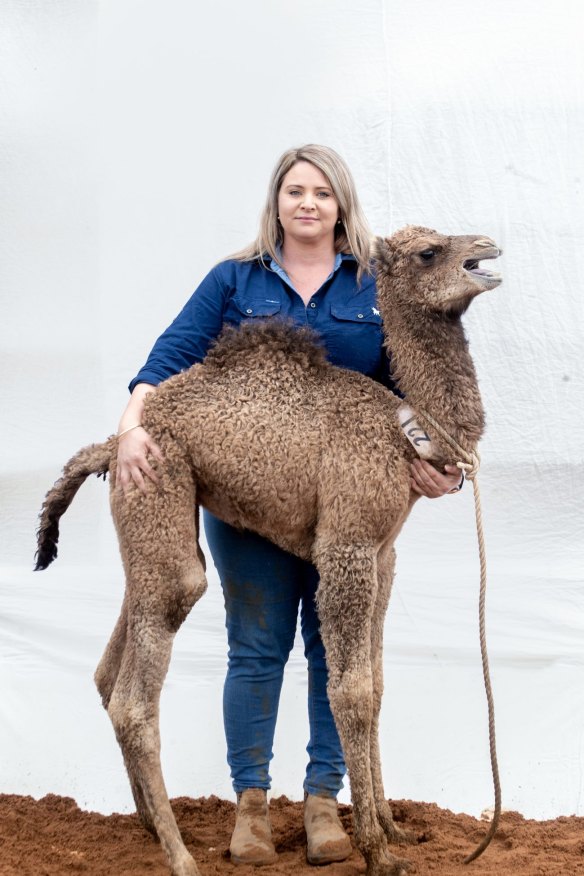Victorian camel milk expansion helped by newborn calves

Calving season at the Camel Milk Company is unusually busy this year. Forty calves have already joined the herd of 350 milking camels at the farm in Kyabram, north central Victoria, and the same number again is expected to birth over the coming weeks.
"Demand for camel milk is growing rapidly and we need to expand the herd," says the company's co-owner Megan Williams.
In a normal year, Williams and her husband, Chris, would buy wild camels captured on stations in central Australia. With COVID-19 putting cross-border travel on hold, the couple are now relying on their newborn calves to bolster numbers for future growth at their 200 hectare farm.
Within a few hours of birth, the camel calves are tentatively testing their spindly legs before standing on their own and beginning to suckle. They will remain with their mother for 12 months then join a herd of heifers before reaching breeding age at four years.
A good camel will produce five to six litres of milk a day. A dairy cow, by comparison, produces about 28 litres a day. Camel milk is smooth tasting and slightly savoury with a fine clean finish. It is gaining popularity with people intolerant to dairy cow products, and also contains around half the fat of cow's milk.
"Camels are incredibly sensitive animals," says Williams. "To milk the mothers, we have the calves by their sides otherwise they won't let their milk down. If a stranger comes or someone is wearing strange clothing, they won't give any milk either."
Global camel milk production exceeds 2 million litres and there are now eight camel farms in Australia. Much of the camel milk at the Williams farm is pasteurised and bottled onsite to be distributed around the Eastern seaboard. A one litre bottle costs $16 from The Camel Milk Company website.
The bulk of the rest of the Williams' farm camel milk is shipped to Tasmania and freeze-dried into a powder. Dried camel milk is popular in south-east Asia, with customers ordering online for their families. Fresh camel milk is also air freighted to Singapore and Thailand every second week.
Most camels in Australia are descendants of those introduced by Afghan cameleers in the late 1800s. The Williams founded their herd from wild animals in 2014 after meeting at an outback station in the Northern Territory where camels were destroying the fragile arid ecology. Some were shot as pests; others were captured for farms elsewhere in Australia.
The couple returned to Megan's family dairy farm at Kyabram and when their firstborn child was diagnosed as lactose intolerant they started investigating the properties of camel milk.
"That was where we started," says Williams. "Back then we were the laughingstock of the farming community. Since then we have had to learn marketing, sales, packaging and export."
After the pandemic hit, Williams also found herself learning about the world of e-commerce.
"We used to have a busy farm gate, with busloads of visitors, but that closed in March," she says. "But what we lost in direct retail we have made up in online sales with customers on every continent except Antarctica."
Restaurant reviews, news and the hottest openings served to your inbox.
Sign up- More:
- Restaurant news
